Multimetrix DMM16 Handleiding
Multimetrix
Multimeter
DMM16
Bekijk gratis de handleiding van Multimetrix DMM16 (8 pagina’s), behorend tot de categorie Multimeter. Deze gids werd als nuttig beoordeeld door 64 mensen en kreeg gemiddeld 4.8 sterren uit 32.5 reviews. Heb je een vraag over Multimetrix DMM16 of wil je andere gebruikers van dit product iets vragen? Stel een vraag
Pagina 1/8

DMM 16
Multimeter
User’s manual
CHAUVIN ARNOUX
190, rue Championnet
75876 PARIS Cedex 18 - FRANCE
Tel.: +33 1 44 85 44 85 - Fax: +33 1 46 27 73 89
info@chauvin arnoux.fr-
Export: Te : l. +33 1 44 85 44 38 -Fax: +33 1 46 27 95 59
export@chauvin arnoux.fr-
694243A02 - Ed. 4 - 07 4 /1
PRECAUTIONS FOR USE
This device is compliant with safety standards IEC61010-1, 61010-2-032 and 61010-2-033 for
voltages up to 300V in category III at an altitude below 2,000m, indoors, with a degree of pollution
of not more than 2.
These safety instructions are intended to ensure the safety of persons and proper
operation of the device. If the device is used other than as specified in this data sheet, the
protection provided by the device may be impaired.
The operator and/or the responsible authority must carefully read and clearly
understand the various precautions to be taken in use.
If you use this instrument other than as specified, the protection it provides may be
compromised, thereby endangering you.
Do not use the instrument in an explosive atmosphere or in the presence of
flammable gases or fumes.
Do not use the instrument on networks of which the voltage or category exceeds
those mentioned.
Do not exceed the rated maximum voltages between terminals or with respect to
earth.
Do not use the instrument if it seems to be damaged, incomplete, or poorly closed.
Before each use, check the condition of the insulation on the leads, housing, and
accessories. Any item of which the insulation is deteriorated (even partially) must
be set aside for repair or scrapping.
Use leads and accessories rated for voltages and categories at least equal to
those of the instrument. If not, an accessory of a lower category reduces the
category of the combined multimeter + accessory to that of the accessory.
Observe the environmental conditions of use.
Do not modify the instrument and do not replace components with "equivalents".
Repairs and adjustments must be done by approved qualified personnel.
Replace the battery as soon as the symbol appears on the display unit.
Disconnect all leads before opening the battery compartment cover.
. Use personal protective equipment when conditions require
Keep your hands away from the unused test probes of the device.
When handling the test probes, crocodile clips, and current sensor, keep your
fingers behind the physical guard.
Disconnect the test probes from the measurement circuit to make current
measurements.
Disconnect the test probes from the measurement circuit before changing
functions.
MEASUREMENT CATEGORIES
CAT II: Circuits directly connected to the low- voltage installation.
Example: power supply to electro domestic devices and portable tools.-
CAT III: Power supply circuits in the installation of the building.
Example: distribution panel, circuit breakers, machines or fixed industrial dev- ices.
CAT - IV: Circuits supplying the low voltage installation of the building.
Example: power feeders, counters and protection devices.
- 1 -
You have just acquired a multimeter and we thank you for your confidenceDMM16 .
For best results from your instrument:
Read these operating instructions carefully;
Comply with the precautions for use.
Risk of danger. The operator agrees to refer to these instructions
whenever this danger symbol appears.
Application or withdrawal authorized on uninsulated or bare conductors at
dangerous voltages.
Battery
The CE marking indicates conformity with European directives.
Double insulation or reinforced insulation.
Selective sorting of wastes for the recycling of electrical and electronic
equipment within the European Union. In conformity with directive WEEE
2002/96/EC: this equipment must not be treated as household waste.
DC– Direct current
AC– Alternating current
AC and – DC Alternating and direct current
Earth
Risk of electric shock
Instructions that must be read and understood
1. PRESENTATION
Le DMM16 is an instrument for measuring electrical quantities that groups the following
functions:
AC or DC voltage measurement;
Frequency measurement;
Resistance measurement, continuity measurement with buzzer, or diode test;
Capacitance measurement;
DC or AC current measurement;
- 2 -
1.1 The switch
The switch has six positions. To access the various functions, set the switch to the
corresponding positions. Each active position is confirmed by an audible signal. The
functions are described in the table below.
OFF Stop
V V /or Hz
AC or DC voltage measurement/Frequency
measurement
/ /
Resistance measurement, continuity
measurement with buzzer, or diode test
Capacitance measurement
120A/
120A/ Hz
120A DC or AC current measurement/
Frequency measurement
60A
/
60A/ Hz
66A DC or AC current measurement/
Frequency measurement
1.2 The keys of the keypad
-" SEL" (SELECT) key
Press the "SEL" key repeatedly to obtain the following functions according to the setting
of the rotary switch:
V /V DC voltage/AC voltage
/ /
Resistance measurement/continuity
measurement/diode test
120A 120A/
120A DC current measurement/120A AC current
measurement
/ 60A 60A
66A DC current measurement/66A AC current
measurement
- "RANGE" key
Your multi meter has a range change f unction that is normally automatic but can be made
manual. When the instrument is switched on, the default mode is automatic range
c hange: the "AUTO" message is then displayed.
Briefly press the "RANGE" key to change to manual mode: the "AUTO" message is
then replaced by "MANU".
. Successive brief presses are used to reach the desired range
Hold the "RANGE" key down for 2 seconds to re he automatic turn to t range change
mode: the "MANU" message reverts to "AUTO".
- 3 -


Choice of ranges (or ratings) according to function:
660.0 6.600 66.00 0.0mV/ V/ V/60 V
660.0 6.600 66.00 0.0mV/ V/ V/60 V
Ω
660.0Ω
6.600 66.00 660.0kΩ/ kΩ/ kΩ
6.600 66.00MΩ/ MΩ
6.600 66.00 660.0nF/ nF/ nF
6.600 66.00 660.0 6.600 66.00μF/ μF/ μF/ mF/ mF
- "HOLD" key
In the "HOLD" mode, the device freezes the display of the last value measured.
Pressing the "HOLD" key briefly during a measurement freezes the display: the
message . is then displayed
A second brief press on the "HOLD" key is used to return to the normal measured
value display refresh mode: the message . disappears from the display unit
- "MAX MIN" key
In the "MAX MIN" mode, the device records the maximum and minimum values of the
measurements made. In this mode, the automatic range change does not change the
range when this mode is entered; if the maximum values exceed the display range
(indicated by the "OL" message), the appropriate higher range must be chosen manually
before reactivating the "MAX MIN" mode.
Successive brief presses on the "MAX MIN" key produce, in order, the following actions:
1st press: the device records and displays the maximum value measured. The
"AUTO" message is replaced by "MANU" and the "MAX" message is displayed.
2nd press: the device records and displays the minimum value measured; the "MAX"
message is replaced by "MIN".
3rd press: the device records the maximum and minimum values measured
simultaneously; it is the value currently measured that is displayed; the "MAX" and
"MIN" messages blink simultaneously on the display unit.
Additional presses serve to display the values recorded one by one by reproducing the
actions of the previous successive presses.
Press the "MAX MIN" key for two seconds to exit from the mode: the "MANU", "MAX",
and "MIN" messages are replaced by "AUTO", indicating that the device once again
changes range automatically.
- "Hz" (Hertz) key
Press the "Hz" key briefly and repeatedly to obtain the following functions according to
the setting of the rotary switch:
AC voltage measured/Frequency/Duty cycle
DC voltage measured/Frequency/Duty cycle
- 4 -
120 120A AC current measured/Frequency/Duty cycle
60 66A AC current measured/Frequency/Duty cycle
NB: When the duty cycle measureme nt is activated, the automatic range change leaves
the range unchanged when the mode is entered: the device changes to manua l range
change mode and the "MANU" message is displayed.
- " " (Backlight) key
A brief press on the "Backlight" key lights or switches off the display unit backlighting. If
not reactivated, the backlighting switches itself off automatically after approximately 60
seconds.
"REL (ZERO)" key
The "REL (ZERO)" key is used to subtract the value displayed when the key is pressed
from all subsequent measurement values and display the result of the subtraction.
This mode can be activated by a brief press on the key for all functions except the
frequency and duty cycle measurements.
When display in relative mode is activated, the automatic range change leaves the range
unchanged when the mode is entered: the device changes to manual range change
mode and the "MANU" and " " messages are displayed.
For DC current measurements, this mode is used to set the display to zero before the
current sensor is placed on the conductor in which the current is to be measured; the
message displayed for this function, in this mode, is "ZERO".
Another brief press on the key effects the return to the normal display mode; the device
returns to the automatic range change mode and the "MANU" and " " messages are
replaced by the "AUTO" message.
Any change of function by the rotary switch terminates display in the relative mode.
1.3 The display unit
- 5 -
Symbol Description
AUTO
Automatic range change
MANU
Manual range change
(Data Hold) Freezes the display
Value displayed in relative mode
Display of the maximum and minimum values
ZERO
Reset for DC current measurements
Diode test function
Continuity test function
%
%
%
%%
Unit and function Duty cycle
APO
(Auto Power O) automatic switching off activated
DC measurement and display
AC measurement and display
Display of a negative value
Low battery indicator (battery must be replaced)
V
(Volt) unit of voltage
A
(Ampere) unit of current
(milliFarad, nanoFarad, microFarad) units of capacitance
( , k -ohm ilo ohm, Megohm) unit of resistance
Hz
(Hertz) unit of frequency
The "OL" message (OverLoad) indicates an overshoot of the measurement or display
capacity.
1.4 The leads and test probes
The multimeter is equipped with two leads (red and black), each terminated by a test
probe of the same colour.
The leads and test probes are not detachable (they are permanently connected) and,
when not in use, can be stowed in the compartments provided for them on the right side
of the device.
The tips of the test probes (once taken out of their compartments by pressing on them
with a finger), allow voltage, resistance, continuity, diode test, and capacitance
measurements.
The test probes have physical guards that show the operator where the hand grip part
ends, beyond which the fingers must not be placed.
1.5 The current sensor
The multimeter has a current sensor that makes it possible to measure a current without
having to open the circuit.
The current sensor and its lead cannot be detached (they are permanently connected);
when not in use, they can be stowed in compartments provided for them on t he back of
the device.
The current sensor has a physical guard that shows the operator where the hand grip
part ends, beyond which the fingers must not be placed.
- 6 -
2. E US
2.1 Commissioning
Place the batteries supplied with the device as follows:
1. Using a cross headed screwdriver, unscrew the screw of the compartment cover -
on the back of the housing and open the cover;
2. Place the 2 batteries in their compartment, with the correct polarities;
3. . Close the cover and screw it back to the housing
2.2 Starting up and check of operation
We recommend performing this procedure at the time of commissioning and, if the device
is used only occasionally, each time it is used.
Hold the "HOLD" key down and switch the instrument on by turning the switch from
"OFF" to "Ω".
Release the "Hold" key and check that the various symbols and segments are
correctly displayed.
A brief press on the "HOLD" key restores the normal display of the selected
function;
If the device is set to the resistance measurement function ("Ω"), check that the
display indicates "A.P.O" (for auto power off) "AUTO" (for automatic range ,
change), "O.L" (for OverLoad), and "MΩ" (for Megohm);
Withdraw the two leads from their compartment and establish a good contact
between the metallic parts of the two test probes; the value measured and
displayed must change from ": ( "O.L " MΩ to "0.0Ωthe value displayed may not
be exactly zero, but must remain very close to zero).
The instrument is operational when the various states described above have been
checked and are correct. The rotary switch can then be set to the desired function
or to "OFF" to switch the instrument off.
- 7 -
Product specificaties
| Merk: | Multimetrix |
| Categorie: | Multimeter |
| Model: | DMM16 |
Heb je hulp nodig?
Als je hulp nodig hebt met Multimetrix DMM16 stel dan hieronder een vraag en andere gebruikers zullen je antwoorden
Handleiding Multimeter Multimetrix

27 December 2023

31 Mei 2023

19 April 2023

18 Maart 2023

17 Maart 2023

7 Februari 2023

13 Januari 2023

9 Januari 2023
Handleiding Multimeter
- Steren
- Biltema
- REV
- Workzone
- Stanley
- Wiha
- Aldi
- Micronta
- Weidmüller
- TFA
- Testec
- Extech
- Kimo
- Voltcraft
- Laserliner
Nieuwste handleidingen voor Multimeter
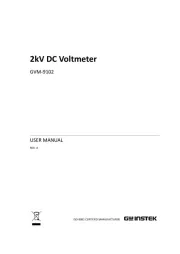
8 September 2025
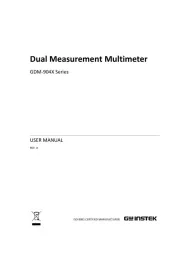
8 September 2025
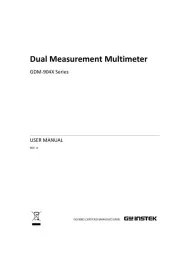
8 September 2025
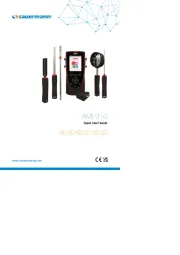
1 September 2025
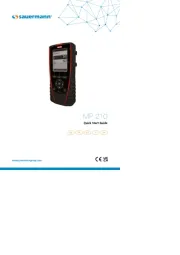
1 September 2025
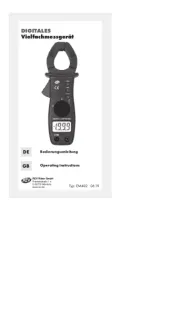
30 Augustus 2025
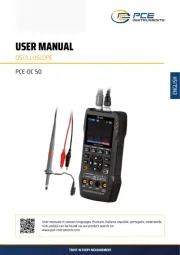
25 Augustus 2025

25 Augustus 2025
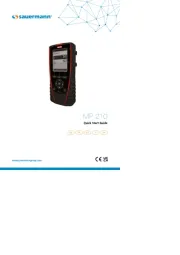
14 Augustus 2025
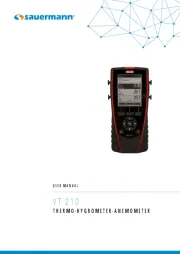
14 Augustus 2025